David Attwood, Dust Blaster
Scott Robinson
Vacuums suck, blowers exhale. This is the corporeal economy at work in David Attwood’s Dust Blaster. The hot-box space at Savage Garden is crowded with only three people on a summer’s afternoon. Savage Garden occupies the backyard of a share house in Carlton North, constructed from offcut materials from MUMA. In the white, sunlit space, there is an irritating whir coming from the piece on the wall opposite the entrance.
The show consists of three works. The most prominent is a leaf blower fixed on the wall in front of two fluorescent tubes, Post New Ryobi RESV2200T (2022), heavy and grey but gracefully quiet. It dangles as it would in any suburban shed, muted for most of its life from its urgent task of shifting leaves from one patch of path (the owner’s) to the next.
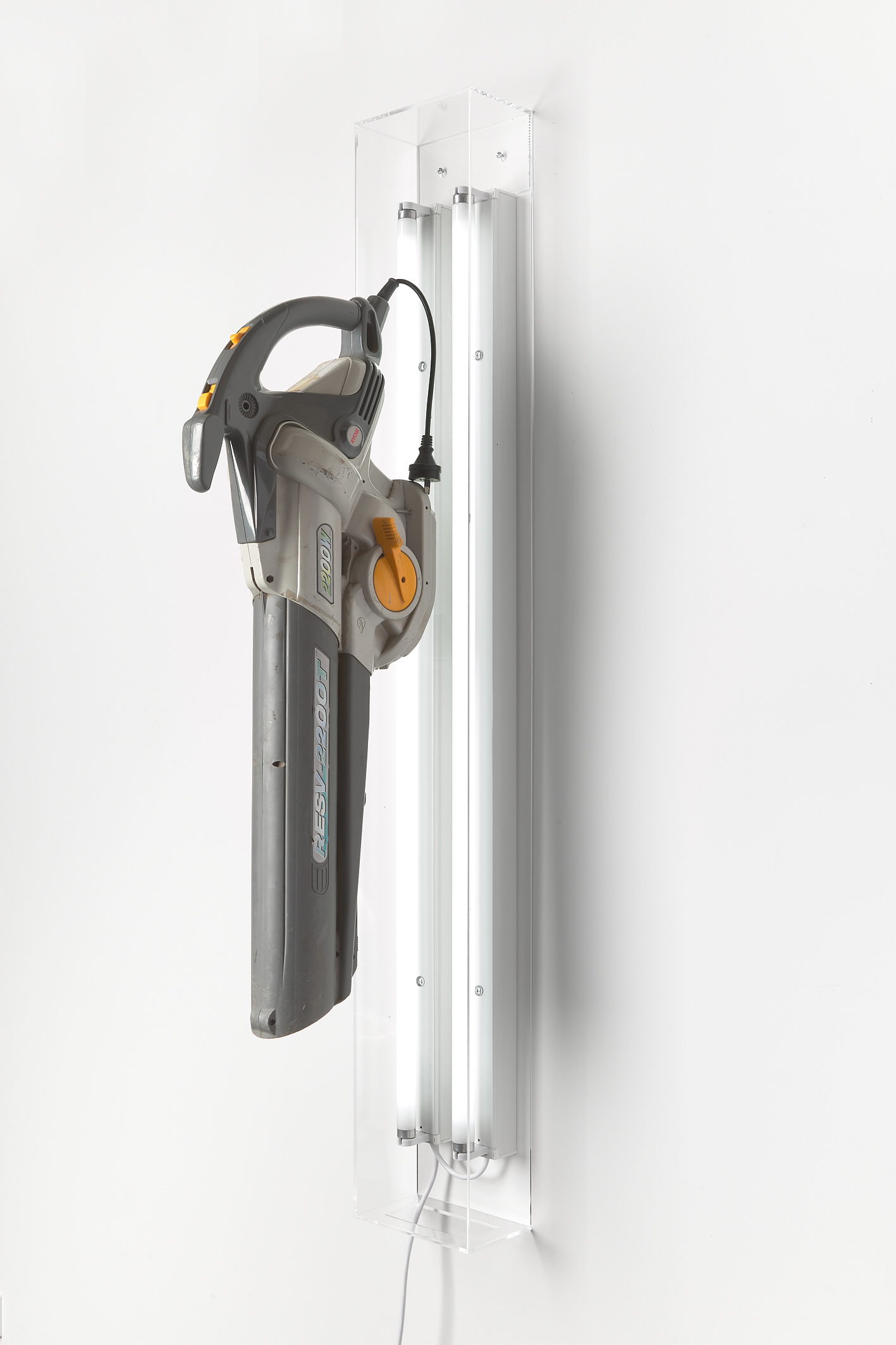
Dust Blaster (2022) is a revelation if you didn’t know that some people need dust blowers for the cracks between the keys on their computer’s keyboard. It is the source of the irritating whir, and it is plugged in to the gallerist’s computer via a USB extension cable. It is small and hangs at a hopeful tilt away from the wall, as though trying to grow to full tumescent prominence. Its visual rhyme with the larger leaf blower form invests its persistent emission with pathos.
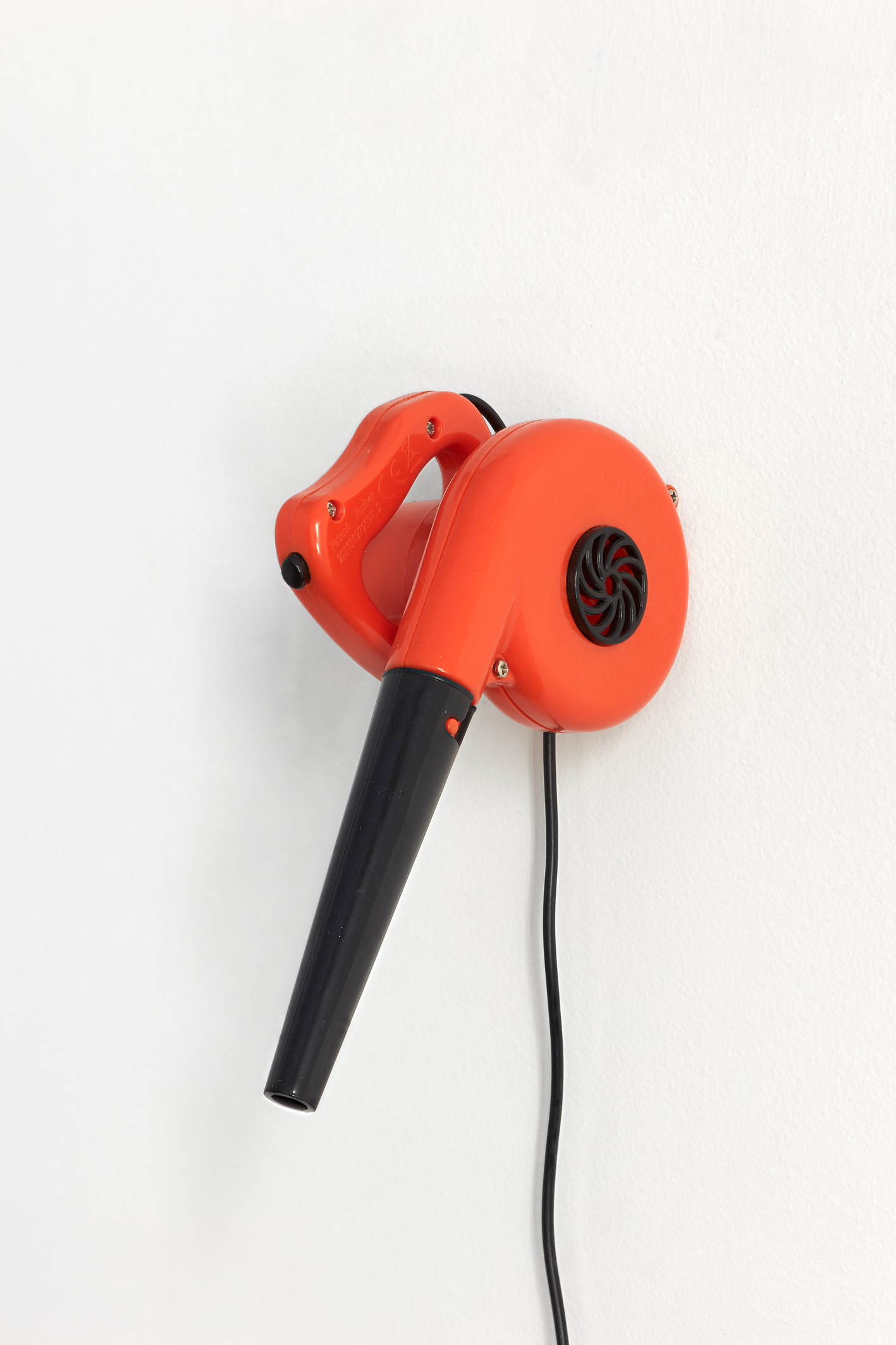
Finally, half-hidden above the entrance is the discrete Lung (2022), a Dyson vacuum motor filter taken from the artist’s home vacuum and clogged with skin, dust and hair. Lung seems to be positioned to remind us, as we leave, of what we extrude. Our debris accumulates with the artist’s, and we discover—-abashedly—-that we have been breathing the air shared by this grubby object.
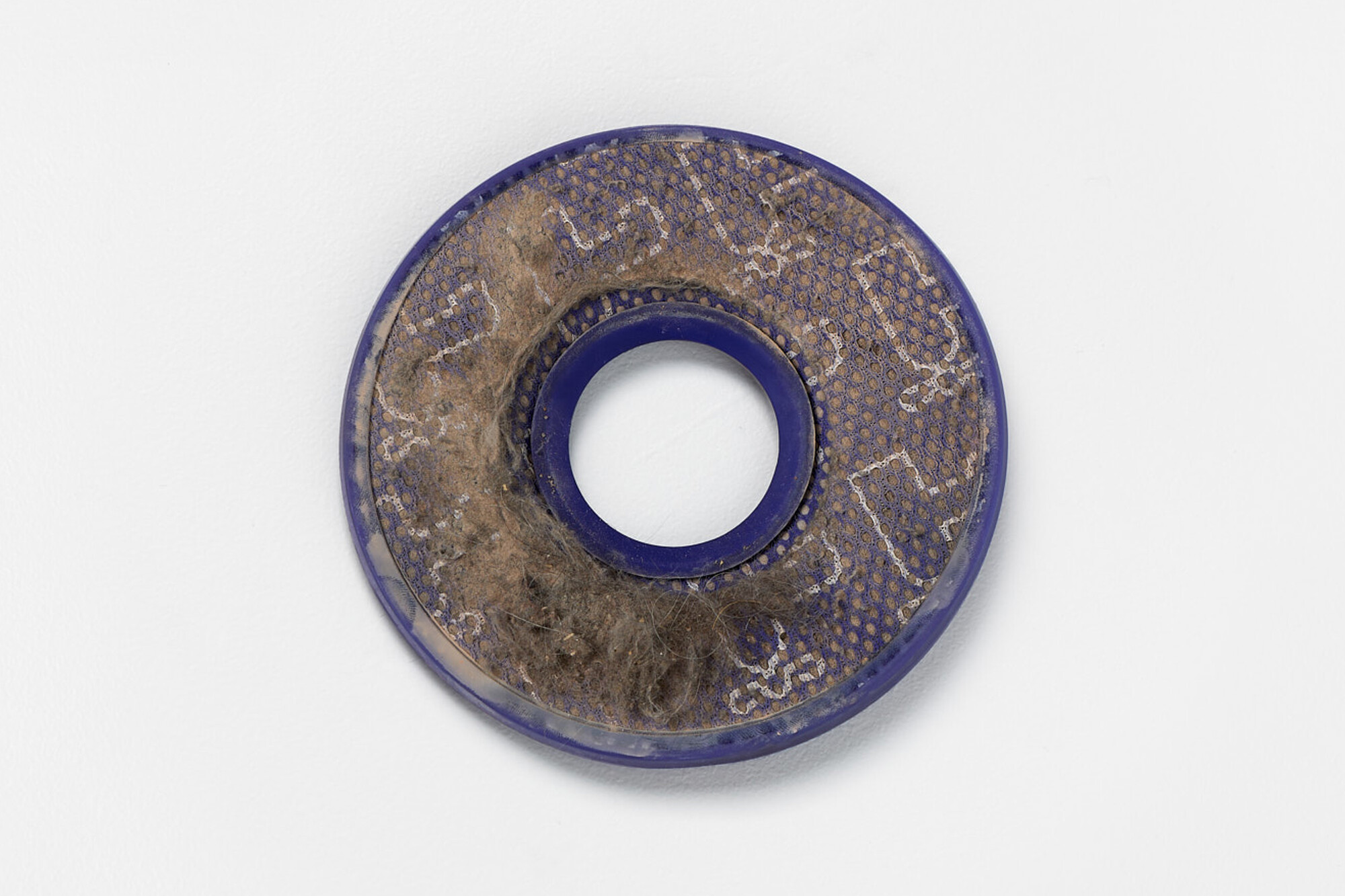
If the leaf-blower, Post New Ryobi, and desktop blower, Dust Blaster, are all too obvious symbols of hyper-commodified, reproductive labour, as Deidre Cannon points out in her catalogue essay, Lung provides an allegorical counterpoint, in Walter Benjamin’s sense. The varieties of suckers and blowers are like a vulgar stop along Benjamin’s ‘One Way Street’, where he finds the world laid bare in its “waste products”. Benjamin’s concept of the allegory destroys the shiny, unified image of the world. Attwood’s gesture of installing the leaf-blower on the wall de-functionalises it and exposes its flaccid impotence as a motor in the production of pointlessness.
In his ‘Arcades Project’, Benjamin observed that “the number of ‘hollowed-out’ things increases at a rate on a scale that was previously unknown, for technical progress is continually withdrawing newly introduced objects from circulation”. This, according to Benjamin, is the “dialectic of commodity production in advanced capitalism: the novelty of products—-as a stimulus to demand—-is accorded an unprecedented importance.”
No one wants a leaf blower. Leaf blowers fail to solve a non-problem. Worse than planned obsolescence, their production has nothing to do with genuine need. Like automated lawnmowers, they are for people who have not yet replaced their lawns with fake plastic grass. Husqvarna will sell you an automated lawn mower for anything upwards of $1,739. In this sense, they make plain the multitude of our failures: we do not know what to do with our debris other than blow it back and forth; we do not know what to do with our time other than do work-like activities as a form of leisure; we do not know what to do with ourselves, and it’s pathetic.
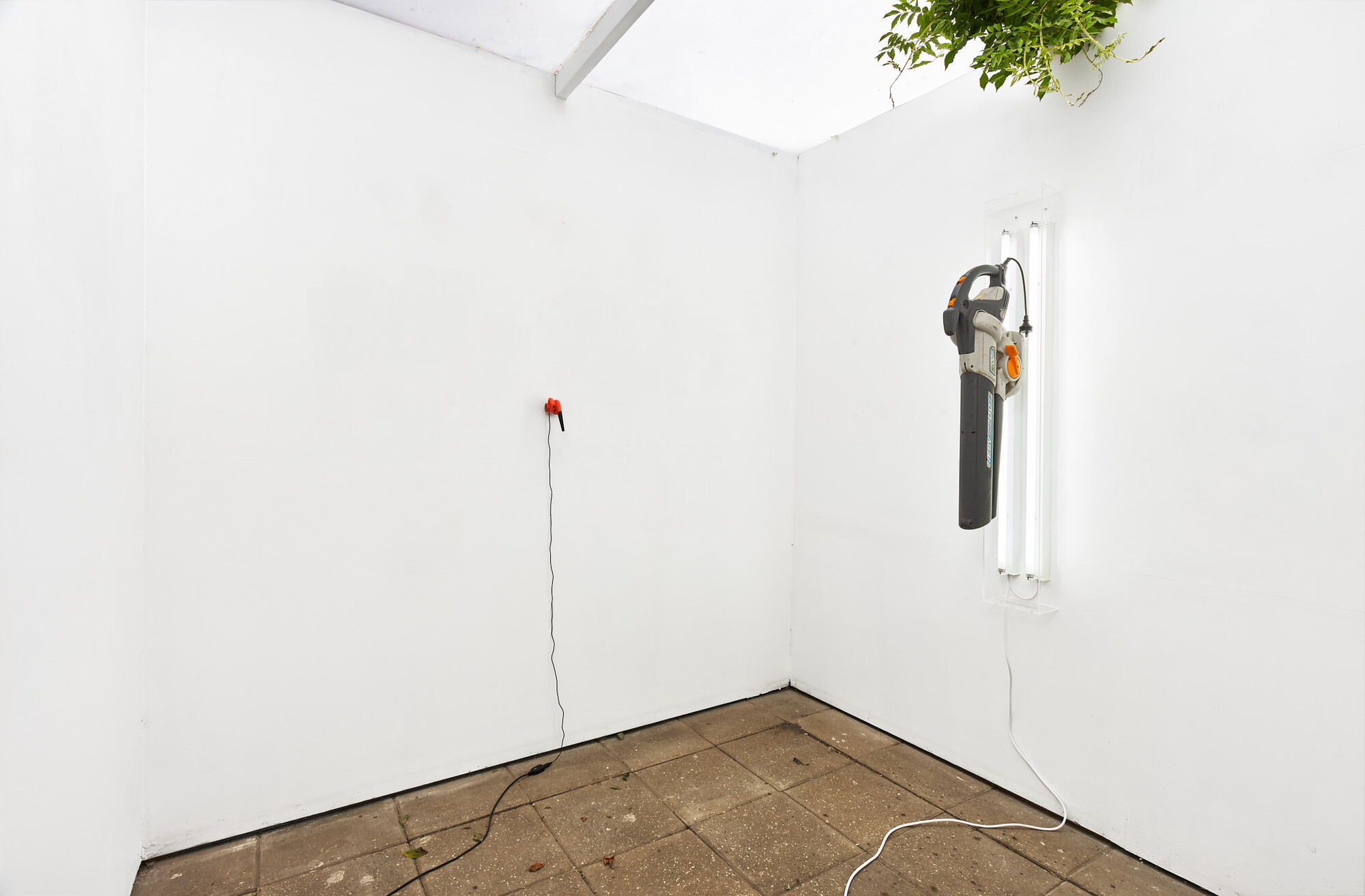
It is commonplace to note that we revere work with the salvific piety of seventeenth-century Calvinists à la the sociologist Max Weber, or to lament the incursion of (mostly unpaid) work into our everyday lives or become indignant at the forms of bullshit that have overtaken “real”, productive labour in many jobs à la the late anthropologist David Graeber. But analysis rarely goes in the other direction: our “free” time is infiltrated by the rhythms of work.
What does it say about us if all we use our free time for is fulfilling reproductive functions like shitting, sleeping and eating, performing work-like behaviours and cleaning narrow private plots as though we were dusting our own gravesites in anticipation of our first genuinely comfortable rest? The objects in Dust Blaster each figure the hyperactive futility of this existence.

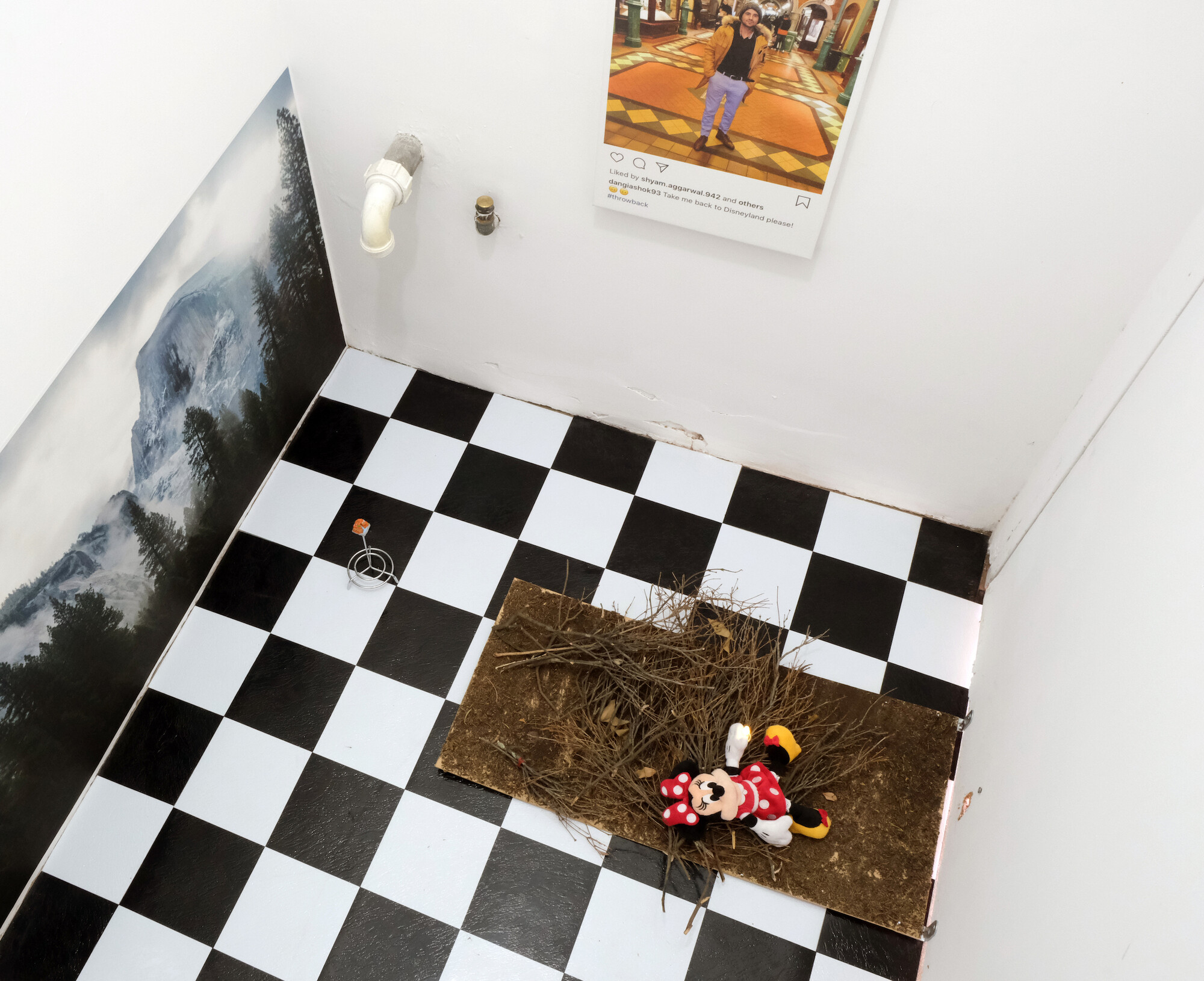
Exposed in the gallery space, the works clearly evoke the legacy of the readymade from Duchamp’s Fountain (1917). This is a feature of Attwood’s previous work, such as Étant donnés (mini) (2021), which miniaturises and obscures a scene of a suggested crime against Minnie the Mouse evoking the sordid Étant donné of Duchamp’s later works (1946-1966). These works were anticipated in Amelia Winata’s review of Isabella Darcy’s Luxury & Labour (2020) at Attwood’s own gallery, Disneyland Paris. In her catalogue text, Cannon observes that “as readymades were objects associated with the processes of maintenance—-think the bottle rack, urinal and snow shovel—-they offered a resistance to their intended standardised use by way of their contextual and situationally-generated ludic qualities”.

Attwood’s work engages with the aesthetic categories defined by debates about post-Fordist, immaterial labour and the feminist insistence on the materiality and under-recognition of reproductive work like cleaning, as Benison Kilby’s Bodies of Work (2019) at Bus Projects aptly catalogued. These categories are elaborated by Sianne Ngai in successive works including Our Aesthetic Categories. For example, Ngai notes the “postindustrial repositioning of leisure within work” in relation to her analysis of the zany as a figure in whom (over) compliance can be a kind of resistance. If Helen Molesworth suggests that the readymade asserts the right to laziness, Attwood considers the ways in which the apparently labour-less task of appropriating consumer objects resembles compliance with the imperative to consume. The only way to escape the demand, then, is to obey it in a way that subverts its intention; consumption as value-creation is turned in Dust Blaster towards the allegorical revelation of pointlessness.
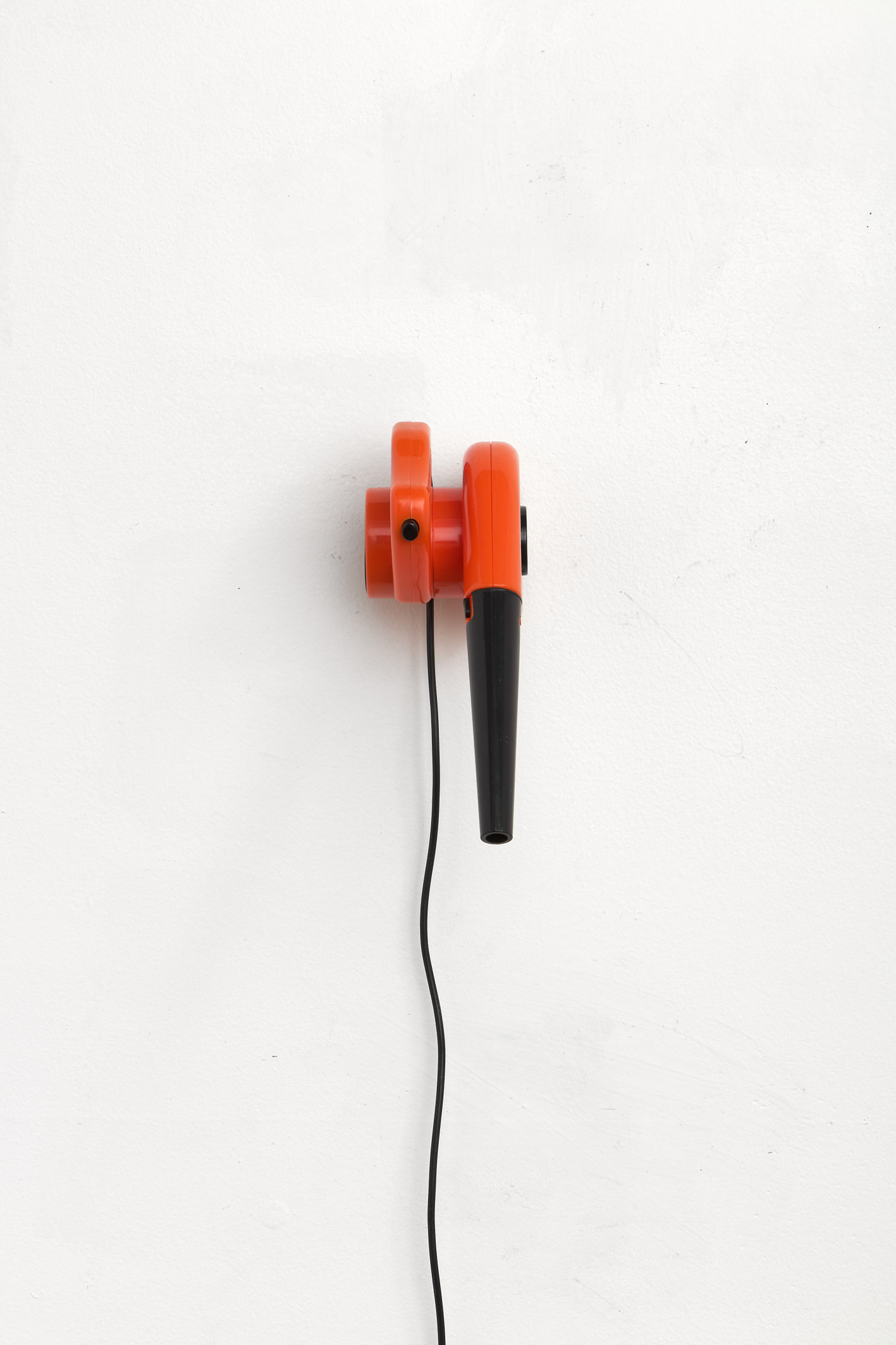
Attwood’s work also shares a lineage with Joseph Kosuth’s One and Three Brooms (1965). But the echo here is formal, repeating a sign to draw attention to internal differentiation in the series (much like the Steinian triumvirate: “A rose is a rose is a rose”). Kosuth’s work also isolates an object used for household cleaning tasks. The comparison illuminates the fastidious fetish for cleanliness that extends as far as the boundaries of the self and property. The Dust Blaster’s weak stream of air suggests a desire for sterility that Lung obstinately resists.
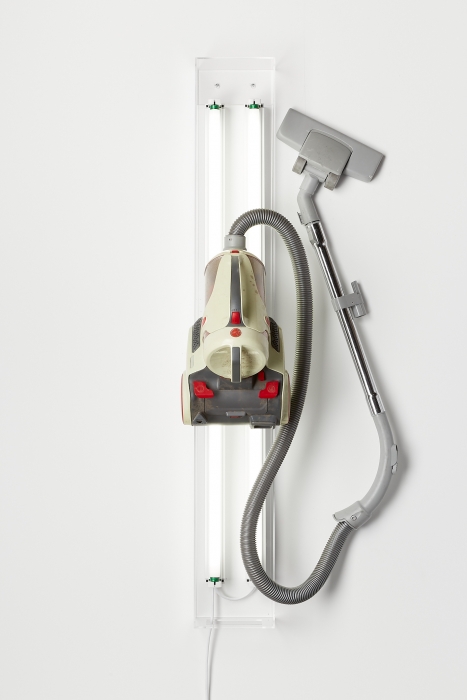
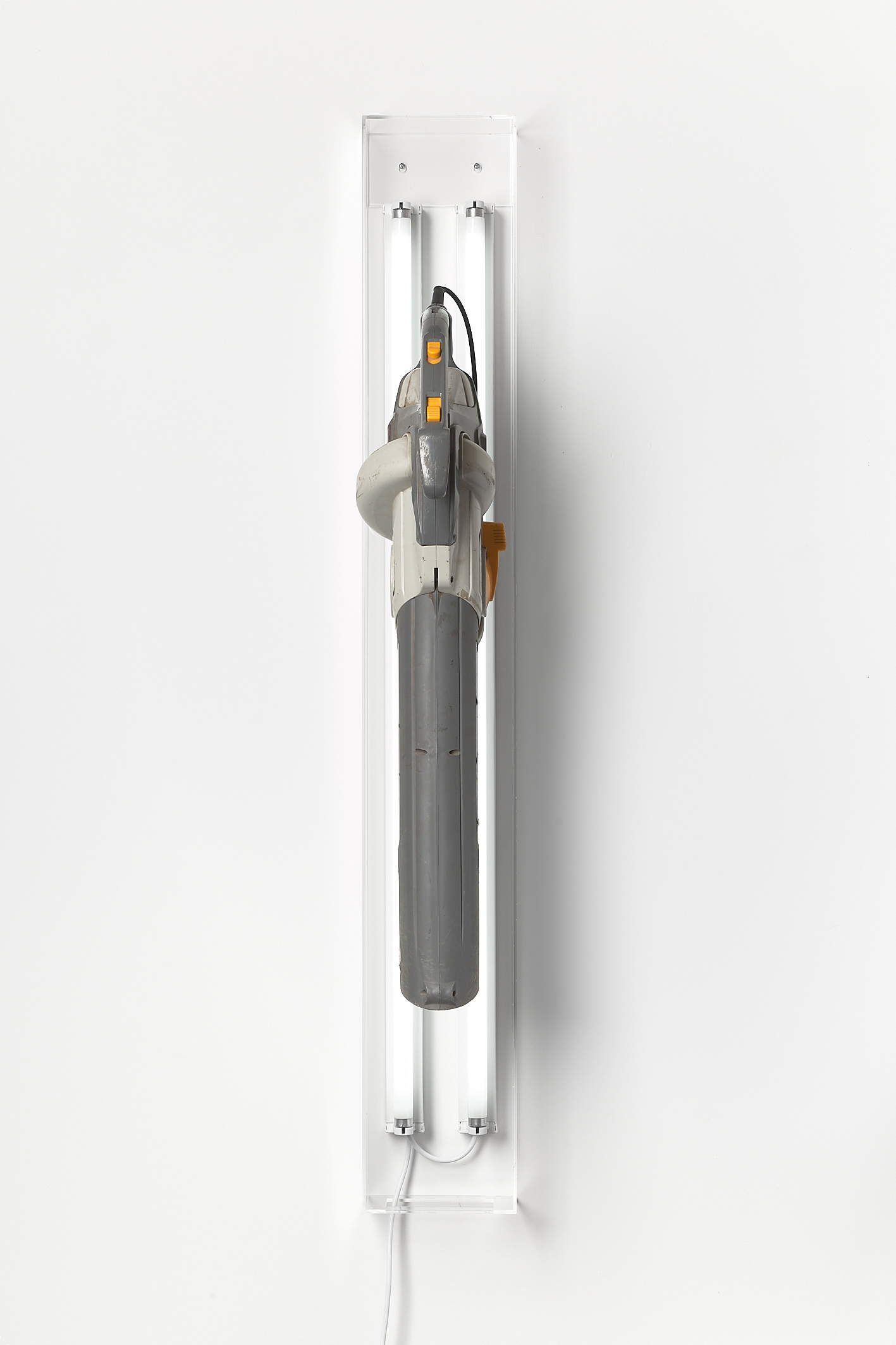
To literalise my opening suggestion that the three works constitute a corporeal economy, we could call them all limbs, albeit the prosthetic limbs adorning the white, picket-fenced suburbanite. The bottom half of Post New Ryobi consists of a thickness and solidity reminiscent of a leg or arm. Its top half implies a kind of robotic hip, with joints that swivel, and a handle that extends downward into a small, apparently functionless plastic protrusion. This makes the object almost creaturely if not quite anthropomorphic, an effect heightened in Attwood’s Post New Hoover Core (2020).
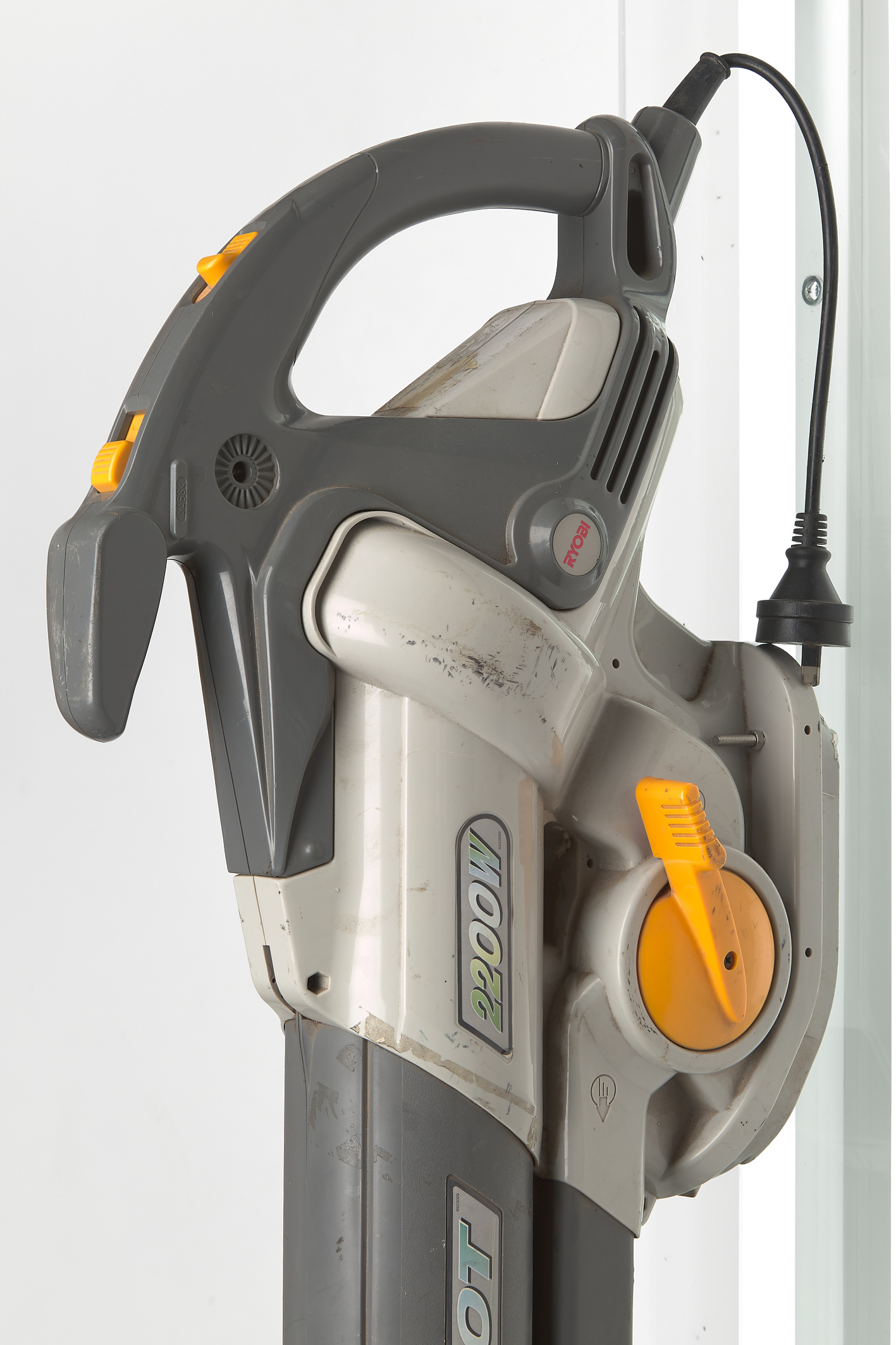
When I walked into Savage Garden, someone offered the piece of guidance that Dust Blaster had the noodle-like shape of a phallus. It implies the kind of efficiency a lazy Lothario might find in a vibrating dildo, an object that, Robert Pfaller might say, enjoys for us. Typically wielded by the suburban male, the leaf blower effects the appearance of phallic authority in its red-faced attempt to preen its patch. We imagine it taking pleasure in its single task of redistributing the dirt of the world, and this fantasy justifies the patent lack of enjoyment we experience in doing the task. If we delegate the task of blowing to Dust Blaster, Attwood delegates the role of sucking to Lung, whose circular form creates the only immediately visible hair-lined orifice (another more discrete hole feeds electrical cables to Dust Blaster and Post New Ryobi’s lights).
The phallic objects do double service insofar as they also blow. The idea of doing double affective and symbolic service may appear consistent with the readymade’s habit of both delighting and frustrating its viewers. But Attwood’s challenge to the readymade is that, in the case of Dust Blaster, it hungrily consumes electricity. In the boot-strapping logic of the neoliberal economy and speculative asset market, it expends energy and so creates value. The Dust Blaster’s umbilical connection to the gallerist’s computer points beyond the readymade to what we might call the always already productive object that sucks energy from the grid and transforms it. Moreover, the electrical cords cathect the phallic objects with the painful ineradicability of their maternal origins, pointing from the appearance of the free (masculine) subject of liberalism to the disavowed web of dependence and constant reproductive labour.

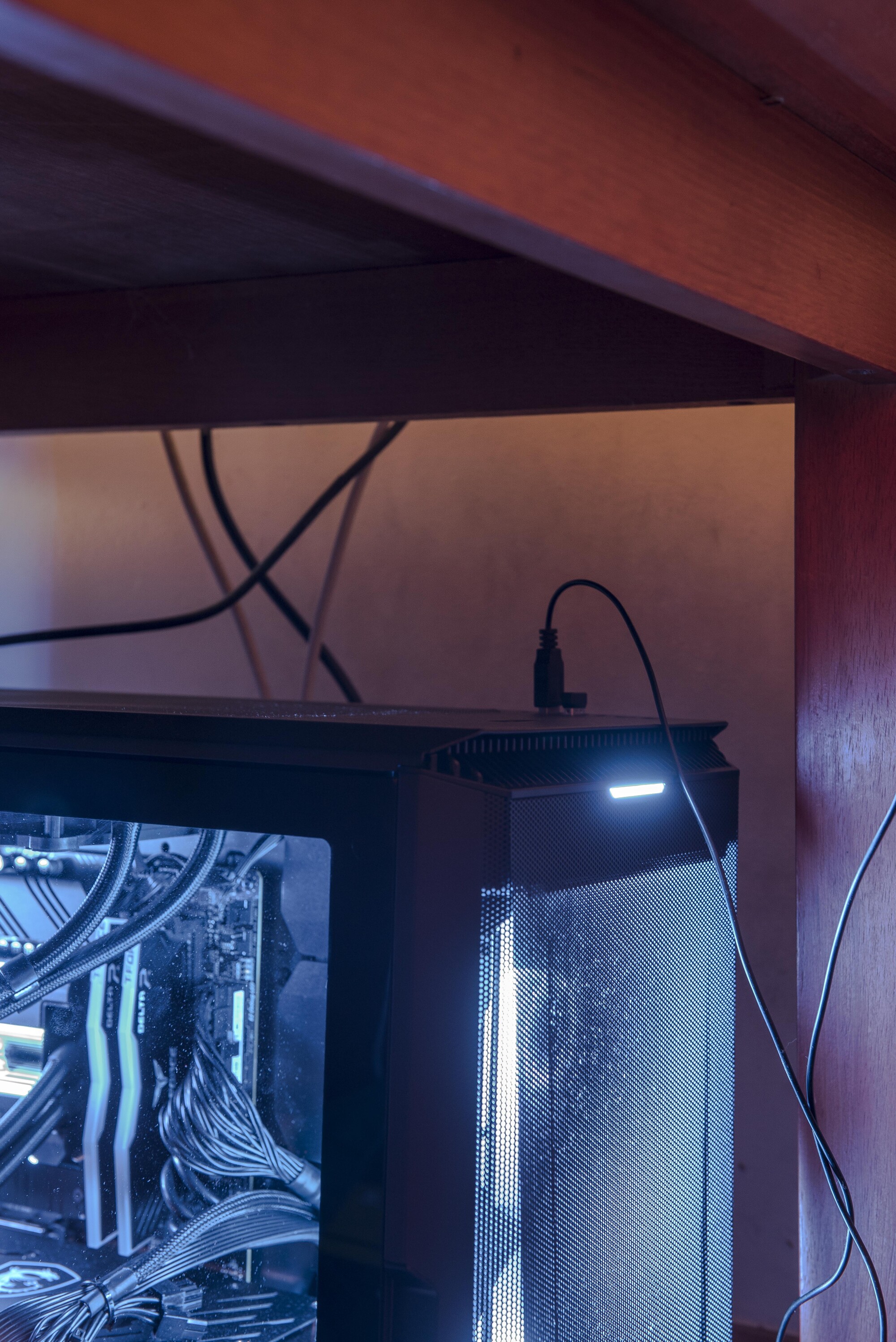
The object is plainly a readymade in the sense that you can buy a physically identical item from Officeworks (IS Gift USB Desktop Dust Blaster) for $19.98. Yet Attwood is acutely aware that the obsolescence of the object pre-dates his appropriation of it for the gallery space. “Gift” is in the name since no one would buy if for themselves. Gimmick might be a better word. Moreover, pointing backward down the production line, no one would voluntarily—-that is, freely—-make or build an object such as this. Except perhaps an artist.

Dust Blaster is visibly and audibly hooked up. Post New Ryobi makes use of fluorescent lights, which serve as a kind of ground to the leaf-blower’s figure. Attwood has a habit of sanctifying the pointless with gorgeous lighting, like Post New (2019), a Hoover Convertible vacuum cleaner, or his trio of Piero Manzoni-esque works concerned with the ritual of excretion: A Decadent Defecation at BUS Projects in 2018, the publicly-installed My Beloved’s Shit (2018), and emoji-mascot body suit performance in Human Shit (2018).

These return us to the detritus, hanging like a wreath on the lintel of the door, recalling Emerson’s throwaway line, “I would write upon the lintels of the door-post, Whim. I hope it is somewhat better than whim at last, but we cannot spend the day in explanation”. As we leave the gallery space, we are confronted with the accumulated excretions of a life and invited to reflect on the costs of our production of pointlessness.
The works each evoke our irritability at dust, dirt and errant leaves, from the microscopic to the merely inconvenient. They assert: no major work will be done here, only the perpetual labour in service of a permanent “cult sans rêve et sans merci”, as Benjamin writes in ‘Capitalism as Religion’. The constant whir of Dust Blaster resounds as the compulsion to endlessly labour in the service of value-creation without a purpose. It is the privilege of art to confound this process, and its burden to fly closest to the destitution of the world in the allegorical form
Scott Robinson is a PhD Candidate in philosophy and casualised academic.


